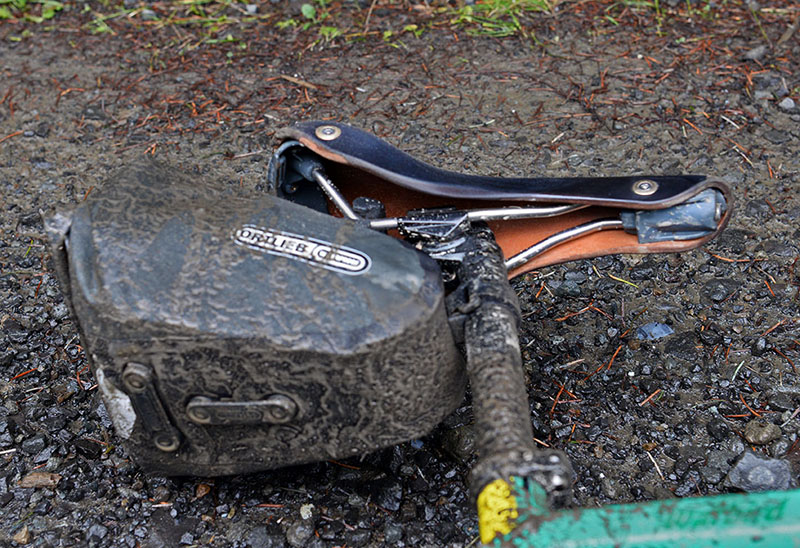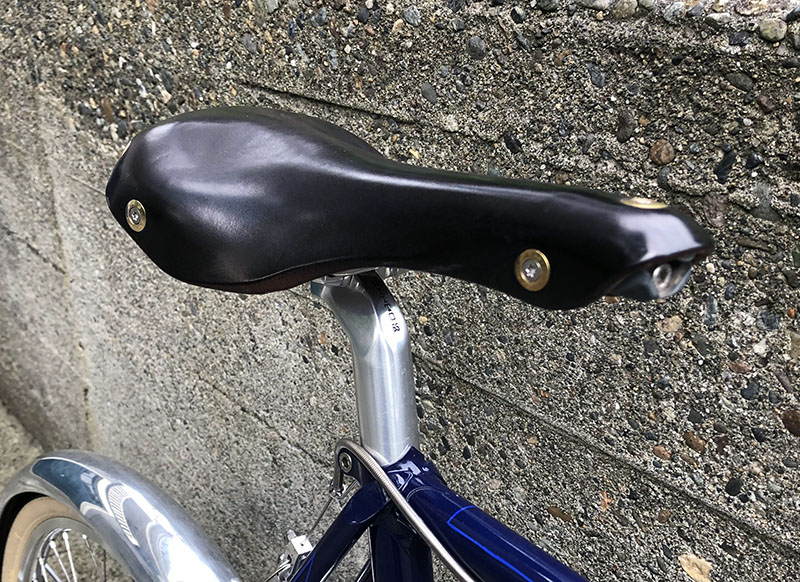How durable are leather saddles?
How durable are leather saddles? It’s a question we often get with respect to the Berthoud saddles we distribute in North America. Especially now that it’s winter here, and often raining. Will a leather saddle be ruined if it’s ridden in the rain?
The answer is a reassuring ‘No.’ There is only one thing to consider: The underside of the saddle should be protected. If the leather gets completely soaked, the saddle top will lose its shape.
If your bike has fenders, then your leather saddle has little to fear in most conditions. And even on a bike without fenders, a small seatbag can keep the saddle’s underside dry. I took the photo above during our test of the Salsa Warbird in January, where we traversed the Cascade Mountains at the foot of Mount St. Helens during a winter storm. It’s easy to see how wet and muddy the bike was, yet the saddle remained in good shape even after 16 hours of riding in these conditions.
In fact, this is the same saddle that I rode in this year’s Paris-Brest-Paris, where it was comfortable for 56 hours of almost non-stop riding. It’s been on a variety of Bicycle Quarterly test bikes, too, since it’s my favorite saddle right now.
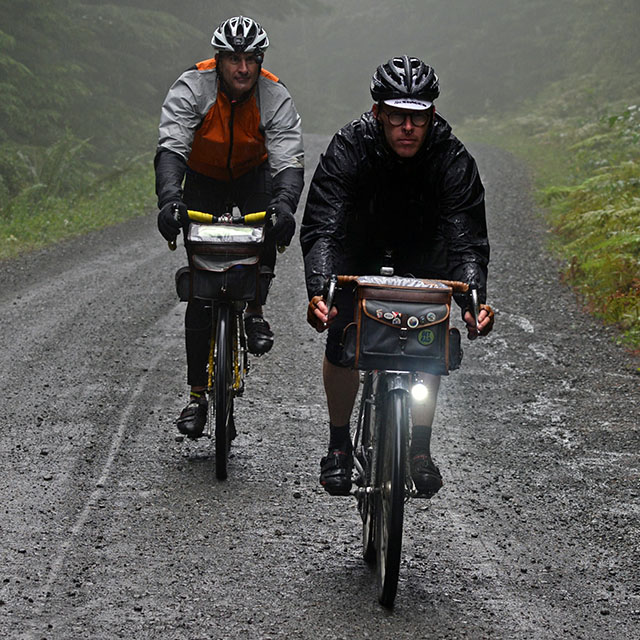
Do you need to protect your leather saddle with a cover? When you park the bike outside in the rain, you shouldn’t leave the saddle exposed. A plastic bag will do the job. When riding, it’s usually not necessary to use a cover, since you are sitting on the saddle. The nose will get wet, but that part won’t deform under your weight and pedaling. If it’s raining so hard that water is sheeting down your rain jacket and onto the saddle, a cover may be a good idea. Few of us ride in conditions that wet. And even if – see the photo above – our saddles have survived intact.
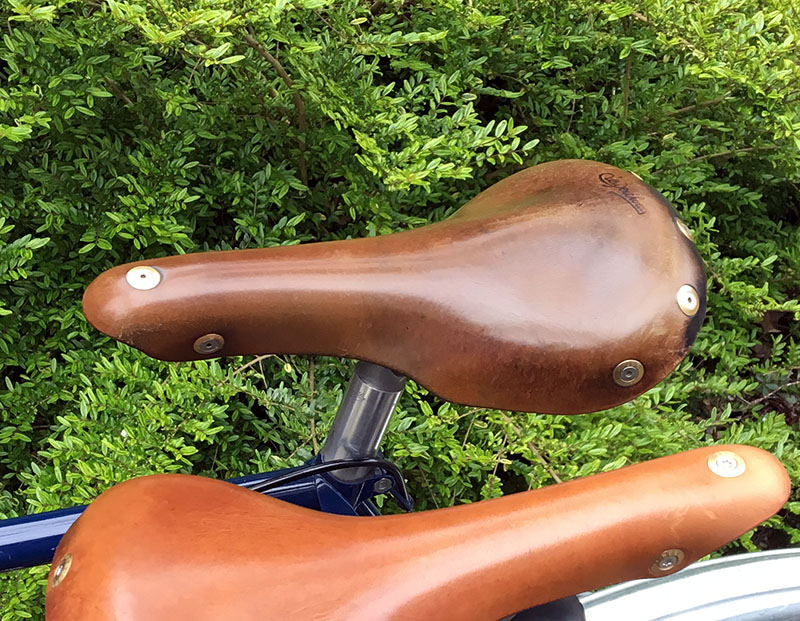
Leather saddles age very well. The saddle on the blue bike above is the 12th Berthoud saddle ever made, way back in 2008. I’ve ridden it daily on my Urban Bike in Seattle, yet it remains in great condition. If you look carefully, you can see scratches that would have ripped through the cover of a plastic saddle. With the thick leather, these scars get polished out when I ride the saddle. As time goes by, the saddle acquires a beautiful patina that synthetic materials can’t match. I look foreward to riding it for another decade or more.
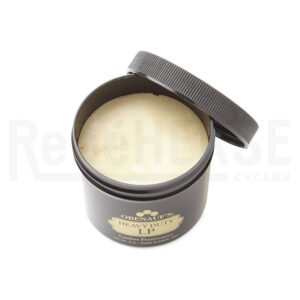 Leather needs a little care: I treat my saddles with Obenauf’s leather preservative once or twice a year – whenever the leather starts to get dry. I also use it on the trim of my Berthoud bags, as well as my leather shoes. It’s natural (beeswax and propolis), non-toxic and pleasant to use. (We sell it, and it doesn’t cost much.)
Leather needs a little care: I treat my saddles with Obenauf’s leather preservative once or twice a year – whenever the leather starts to get dry. I also use it on the trim of my Berthoud bags, as well as my leather shoes. It’s natural (beeswax and propolis), non-toxic and pleasant to use. (We sell it, and it doesn’t cost much.)
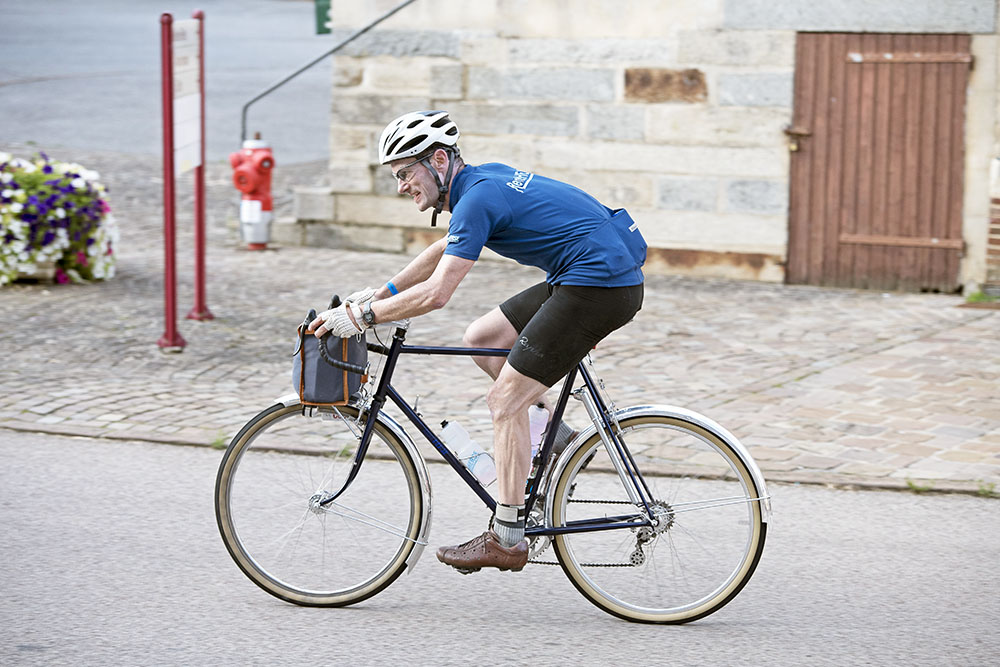
We love Berthoud saddles not just for their durability, but for their comfort. Leather shapes itself to your anatomy as you use it, so you effectively create your own custom saddle that gets better with time. It’s hard for me to imagine riding truly long distances like Paris-Brest-Paris on any other saddle.
Click here for more information about Berthoud saddles.


